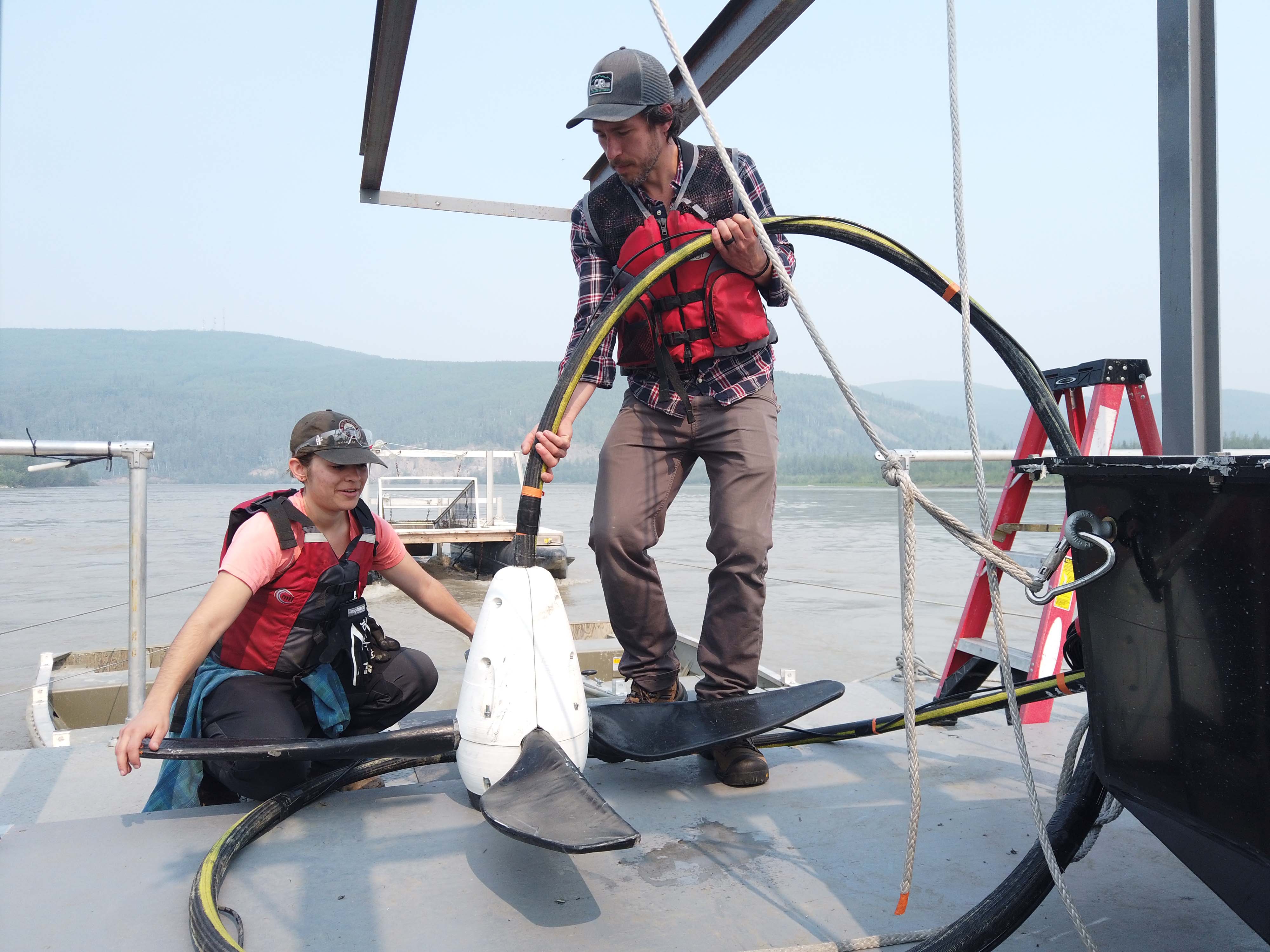Testing Begins for Bladerunner Hydrokinetic Turbine

The Tanana River Test Site was bustling with action as the Bladerunner Energy hydrokinetic turbine was being tested last week. The testing is part of a U.S. Department of Energy’s Advanced Research Projects Agency funded partnership between Bladerunner Energy and UAF’s Alaska Center for Energy and Power.
The project is part of the Submarine Hydrokinetic and Riverine Kilo-megawatt Systems – or SHARKS – which supports the design and testing of economically competitive hydrokinetic turbines for tidal and riverine currents.
“When we put together the SHARKS program, one of the emphases was remote communities,” said ARPA-E program director Mario Garcia-Sanz. “Having devices in the water generating electricity [in remote communities] from the ocean, from tidal, or in the river is the main emphasis of the program.”
Bladerunner is still in the research and development stage, and is working with ACEP to optimize the rotor and make the technology readily available and applicable to remote communities in Alaska.
“Working with the University of Alaska Fairbanks has been crucial throughout our research and development,” said Bladerunner founder and chief executive officer Moriel Arango. “The team at the Alaska Center for Energy and Power have an immense knowledge base of the conditions we should be expecting, and they have a clear understanding of the needs of the communities, existing infrastructure, the supply chain in these local areas, and how to get systems deployed. It has been fundamental to have their engagement in this project.”
The Bladerunner design takes an approach quite different to traditional hydrokinetic devices. The generator sits above the water, allowing for easier access for maintenance, faster deployment and alleviating issues of debris suspended in the moving water. The design uses a flexible torque rope with a biomimetic rotor on the end, which reduces impact to the mooring and anchoring system and allows for deflection of the device when impacted by debris. The design allows the device to stabilize in the water column, minimizing the infrastructure necessary for deployment.
“ARPA-E targets the sweet space that ACEP works in – we are looking to bring technologies out of the lab and into the field,” said ACEP interim director Jeremy Kasper. “This technology has been in the river a few times in the past year and by the time we are finished testing for Bladerunner, we are hoping it will be close to ready for deployment in an Alaska community.”
For more information on the Bladerunner testing and the Tanana River Test Site, please contact Ben Loeffler, co-director of the Pacific Marine Energy Center at bhloeffler@alaska.edu.
Bladerunner Energy’s Moriel Arango holds up the Bladerunner turbine while ACEP intern Maria Salzetti holds the blades on board the test barge at the Tanana River Test Site near Nenana. Photo by Jeff Fisher.


